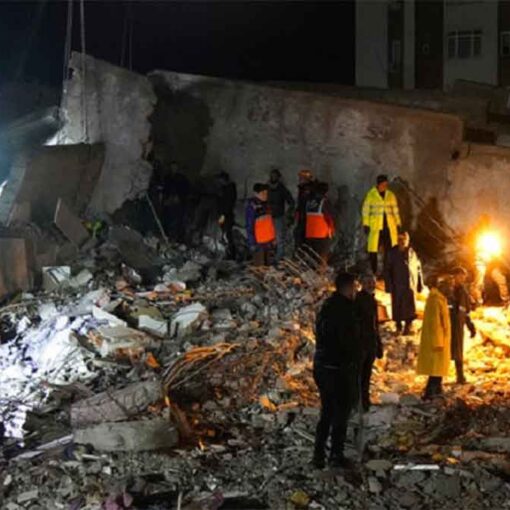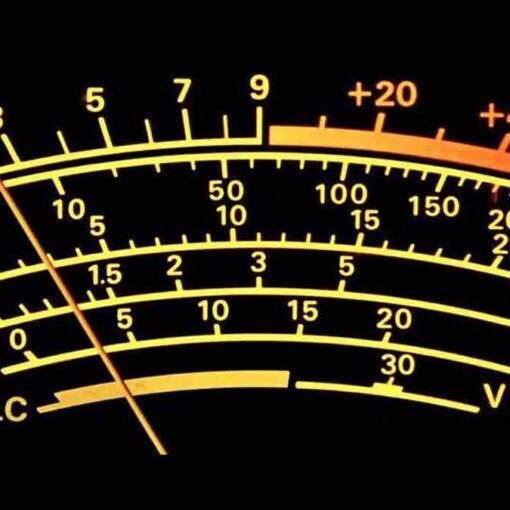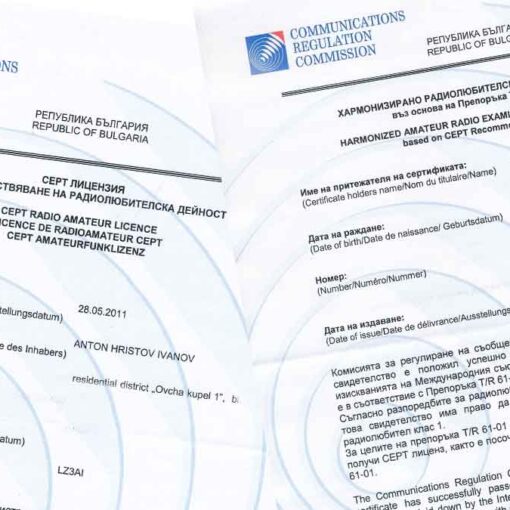Today, April 12, we celebrate World Aviation and Astronautics Day.
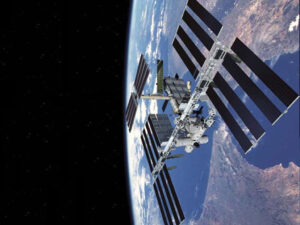
We also celebrate 54 years since Yuri Gagarin’s space flight.
On April 12, 1961, at 9:07 a.m. Moscow time, the Vostok spacecraft took off from the Baikonur Cosmodrome with pilot-cosmonaut Yuri Alekseevich Gagarin. The ship makes one round of the Earth in 108 minutes. Two days later, Gagarin was solemnly welcomed on Red Square in Moscow in front of thousands of people who came to see him.
A significant contribution to the theory and practice of flight was made by the German scientist Otto Lilienthal. Between 1891 and 1896 he designed, built and watered several gliders. On December 17, 1903, the first successful flight of an airplane was carried out by the American mechanics Wright Brothers with an internal combustion engine running on aviation fuel.
The term cosmonautics was introduced by G. E. Langemak. The beginning of the practical exploitation of space was set on October 4, 1957 with the launch of the first artificial Earth satellite (ISS) in the Soviet Union. The next stage in the mastery of space comes only a month later – on November 4 this year. with
Sputnik – 2 sent the first living being into space – Laika the dog. His fate was predetermined, as the ship was not intended to return to Earth.
Here are some of the most significant cosmic events:
- October 4, 1957 — the first launched ISZ (USSR)
- April 12, 1961 — the first manned space flight (Yuri Gagarin, USSR)
- March 18, 1965 — first manned spacewalk (Alexei Leonov, USSR)
- July 21, 1969 – landing of a man on the moon (Neil Armstrong, USA)
- April 19, 1971 – the first orbital station (USSR), later jointly with the USA, creation of the International Station
- March 3, 1972 — launch of the first apparatus that subsequently left the boundaries of the Solar System (“Pioneer-10”, USA)
- April 12, 1981 – launch of the first reusable spacecraft (Columbia, USA)
On July 19, 1960, the Soviet ship Sputnik 5 was launched into space with the dogs Belka and Strelka. The purpose of the experiment is to check the effectiveness of the life security system in space and study the influence of cosmic rays on living organisms. The dogs Belka and Strelka were the first living beings to return safely to Earth.
The pinnacle of space exploration came on April 12, 1961, when the first man, the Soviet cosmonaut Yuri Gagarin, was sent into space, and later that day was declared International Cosmonautics Day.
Space history of Bulgaria
It began in August 1964, when at a reception of the Minister of Defense of the USSR, Marshal Rodion Malinovsky, the military attaché at the embassy of the People’s Republic of Bulgaria, Lieutenant-General of Aviation Zahari Zahariev, raised the question of the flight of Bulgarians into space with a Soviet spacecraft. In 1964, however, this was impossible. The Soviet Union does not yet have a suitable spacecraft for such flights.
The dream became a reality in 1977 when, within the Intercosmos program, the second group of countries (after the first Czechoslovakia, the Polish People’s Republic and the GDR) consisting of the People’s Republic of Bulgaria, Cuba, the Hungarian People’s Republic, the Mongolian People’s Republic and the Socialist Republic of Romania sends its astronaut candidates to the Yu. A. Gagarin”.
Strict selection reduces the candidates to 4 people:
- Alexander Panayotov Alexandrov
- Georgi Lyubenov Yovchev
- Georgi Ivanov Kakalov
- Ivan Nakov
They are leaving for Moscow. Soviet doctors diagnosed Georgi Yovchev with a heart problem and he died. It was finally decided that the main candidate would be Georgi Kakalov, and the backup – Alexander Alexandrov. Due to the unpleasant meaning of the main candidate’s last name Kakalov in Russian, it was decided to use his father’s name Ivanov.
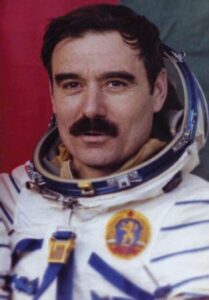
Bulgaria got a second chance to send an astronaut into orbit in 1986, when the Minister of Defense of the NRB, Army General Dobri Djurov, who had returned from a visit to the USSR, announced that he had managed to arrange with the Soviet authorities to send a second cosmonaut into space. A protocol for the preparation and conduct of a joint Bulgarian-Soviet space flight was signed in Moscow on August 22, 1986.
It was decided that the financing would be arranged through the construction and production of scientific equipment worth 7 million foreign currency leva (14 million dollars at the then exchange rate), which would be handed over to the USSR. The technologies for this equipment were provided free of charge by the USSR to the NRB. After a careful medical selection of more than 300 airmen from the Bulgarian Air Force, 10 candidates remain, from which the Soviet medics who arrived in Bulgaria choose 4 people:
- Alexander Alexandrov
- Plamen Alexandrov
- Nikolay Raikov
- Krasimir Stoyanov
In Moscow, the Soviet doctors discovered problems with Plamen Alexandrov and the group remained in the composition of 3 people. 2 candidates were finally selected:
- Alexander Alexandrov – main candidate
- Krasimir Stoyanov – understudy.
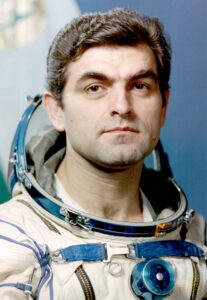
Bulgaria’s space achievements made it one of the leading space powers in the world in the 20th century.
The contribution of the two Bulgarian cosmonauts Georgi Ivanov and Alexander Alexandrov is enormous, the original products of the Bulgarian space apparatus are exceptional and it is a fact that Bulgaria is the third country to send food into space after the USA and the Soviet Union and the first to create space greenhouses. The Bulgarian space food is the work of the Institute of Cryobiology and Lyophilization, and the team of Academician Tsvetan Tsvetkov has special merits. Today, astronauts of all genders and nationalities eat their favorite food in outer space and with every right bless the Bulgarian scientific genius.
The most exciting event in our space activity towards the end of the 70s was the preparation of the scientific program and the launch of the first Bulgarian cosmonaut Georgi Ivanov. The flight was extremely dramatic – due to a failure of the main engine, the docking with the Salyut station could not take place, and the return of the cosmonauts themselves to earth was in question! They showed remarkable composure and managed to return safely. One of the most significant research achievements was the Bulgaria-1300 program. Two artificial earth satellites were put into orbit with a complex of Bulgarian scientific equipment for measuring physical parameters, which was not even on the American Dynamic Explorer, which was flying at the same time. After these great successes, our scientists together with Russia, France and Germany, with the leading participation of the Bulgarians, created a multi-channel TCS system and a complex video spectrometric and navigation complex Frigate.
In 1988, the second Bulgarian cosmonaut Alexander Alexandrov flew to the MIR Orbital Station on board the Soyuz TM-5. For this flight, an extensive scientific program and a corresponding apparatus complex was developed for the study of space physics, remote studies of the Earth, space biology and medicine, microgravity technologies. Extremely interesting new data and results were obtained. In 1982, work began on the major projects Interball and the World Greenhouse, whose scientific programs were carried out extremely successfully until 2000, ending with unique scientific results and glorifying Bulgarian scientists. The SVET space greenhouse is the world’s first automated system for conducting ten-year plant experiments involving many international crews with different types of crops. Unique results have been obtained in the field of fundamental gravitational biology.
Space science in Bulgaria does not end there, only the funding necessary for its normal development ends.
Bulgarian plants and food in space
It has been shown that weightlessness is not an obstacle for a full cycle of development, and from seeds sown on board, “space plants” will be born and they will be used to feed and purify the air of the crews on future long-duration human flights initially to Mars. Even today, Bulgarian scientists are sought after and desired partners, and it can be argued that there is no major international project in which specialists from Bulgaria are not invited to participate. And now on board the International Space Station there is equipment created in our country for research and control of the radiation situation. One of the prestigious achievements of Bulgarian science is the creation of the space menu. Our space food is the work of scientists at the Institute of Cryobiology and Lyophilization, who are developing modern biotechnologies for cold preservation and vacuum drying of biological materials. As a result, their water content is reduced to the level of 2 to 5 percent., i.e. they are sublimated. The list of our space foods includes yogurt with oatmeal, several types of nuts, a set of freeze-dried fruits – strawberries, apples, apricots, peaches, melons, and others. The Bulgarian menu is adapted for a four-time daily diet – two breakfasts, lunch and dinner. It is characteristic of this type of food that they have a shelf life of up to 5 years. They cover the body’s requirements of biological nutrients, with the average value being 3000-3200 kcal.
Space (satellite) link
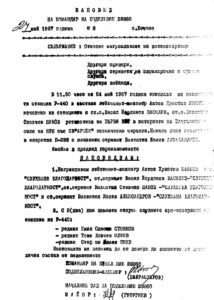
On May 24, 1987, the first satellite communication in the history of the Bulgarian Army took place between the GSH station with Chief Anton Ivanov from Sofia, with crew: Vasil Yordanov Vasilev – deputy, Valentin Stanchev Tsanov, Emil Spasov Stoyanov, Tony Denchev Iliev and Stefan Iliev Stefanov , and the Navy station with chief Emil Popov from Varna, crewed by Pavel Pavlov, deputy.
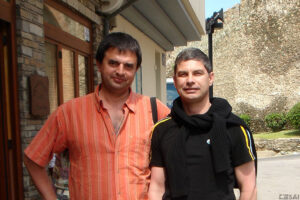
At the risk of leaving someone out, I won’t list everyone else who contributed in one way or another to this achievement.
